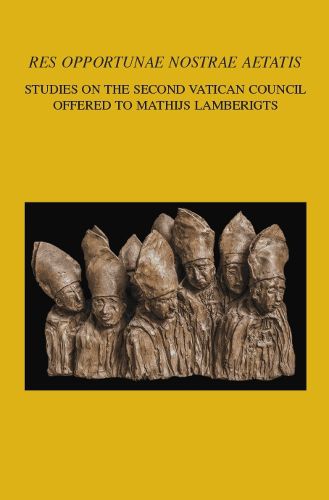Readings Newsletter
Become a Readings Member to make your shopping experience even easier.
Sign in or sign up for free!
You’re not far away from qualifying for FREE standard shipping within Australia
You’ve qualified for FREE standard shipping within Australia
The cart is loading…






The Second Vatican Council is one of the central themes in the research
of Mathijs Lamberigts. He contributed to the study of the redaction
history of many Council documents and highlighted the role of individual
participants at the Council. As director of the Centre for the Study of
the Second Vatican Council, he took great care in preserving and making
accessible the archives of conciliar participants, especially those of
the squadra belga As a scholar and supervisor, he promoted the
spirit and the letter of the Council as an ongoing commitment to
many.
The twenty-three contributions in this volume all bear witness to the
same commitment to study the history and texts of the Council. The
articles in the first part focus on the work of Albert Prignon, Edward
Schillebeeckx, Emiel-Jozef De Smedt, Henri de Lubac, Remi Hoeckman,
Joseph Neuner, Peter Maan and many others. They show how the Council was
rooted in early twentieth-century discussions and publications, how it
was shaped by Catholics and non-Catholics, and how it affected the
thinking and acting of individuals and groups. The contributions in the
second part focus on the Council as an unfolding event. They pay
attention to the redaction history of Lumen gentium, Unitatis
redintegratio, Nostra aetate, and Presbyterorum
ordinis. They analyse the positions of the Secretariat for Christian
Unity, the Coetus Internationalis Patrum, and the European
bishops, or emphasise the development of key concepts, including the
In quibus et ex quibus, Mary as the Mater Ecclesiae, or
the (in)famous subsistit in. The third part deals with the
lasting significance of the Council. With articles on revelation,
ecclesiology, liturgy, and interreligious dialogue, the authors in this
part creatively explore the (un)contested aspects of the Council’s
legacy and the horizon it projects.
With these contributions Mathijs Lamberigts’ former students and
colleagues wish to honour and continue his research on the Second
Vatican Council.
$9.00 standard shipping within Australia
FREE standard shipping within Australia for orders over $100.00
Express & International shipping calculated at checkout
The Second Vatican Council is one of the central themes in the research
of Mathijs Lamberigts. He contributed to the study of the redaction
history of many Council documents and highlighted the role of individual
participants at the Council. As director of the Centre for the Study of
the Second Vatican Council, he took great care in preserving and making
accessible the archives of conciliar participants, especially those of
the squadra belga As a scholar and supervisor, he promoted the
spirit and the letter of the Council as an ongoing commitment to
many.
The twenty-three contributions in this volume all bear witness to the
same commitment to study the history and texts of the Council. The
articles in the first part focus on the work of Albert Prignon, Edward
Schillebeeckx, Emiel-Jozef De Smedt, Henri de Lubac, Remi Hoeckman,
Joseph Neuner, Peter Maan and many others. They show how the Council was
rooted in early twentieth-century discussions and publications, how it
was shaped by Catholics and non-Catholics, and how it affected the
thinking and acting of individuals and groups. The contributions in the
second part focus on the Council as an unfolding event. They pay
attention to the redaction history of Lumen gentium, Unitatis
redintegratio, Nostra aetate, and Presbyterorum
ordinis. They analyse the positions of the Secretariat for Christian
Unity, the Coetus Internationalis Patrum, and the European
bishops, or emphasise the development of key concepts, including the
In quibus et ex quibus, Mary as the Mater Ecclesiae, or
the (in)famous subsistit in. The third part deals with the
lasting significance of the Council. With articles on revelation,
ecclesiology, liturgy, and interreligious dialogue, the authors in this
part creatively explore the (un)contested aspects of the Council’s
legacy and the horizon it projects.
With these contributions Mathijs Lamberigts’ former students and
colleagues wish to honour and continue his research on the Second
Vatican Council.